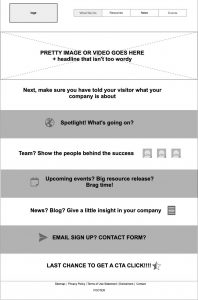— October 18, 2018
One of the most valuable ways to assure high levels of success for leaders in your organization is to create an effective onboard coaching experience.
“Four out of ten newly promoted managers and executives fail within 18 months…”
The benefits of onboard coaching are compelling. Four out of ten newly promoted managers and executives fail within 18 months of starting new jobs, according to research by a leadership development firm in Pennsylvania. When first recruited, the following types of executives experienced the highest failure rates within the first 18 months: senior-level executives (39%), sales executives (30%), marketing executives (25%), and operations executives (23%).
The major reasons for failure in the new job are:
- 75% fail to establish a cultural fit
- 52% fail to build teamwork with staff and peers
- 33% are unclear about what their bosses expect
- 25% don’t have the required internal political savvy
- 22% there’s no process to assimilate executives into the firm
“Coaching newly hired executives can turn around this high rate of failure…”
Coaching newly hired executives can turn around this high rate of failure and accelerate their ability to have an immediate, positive impact on the organization.
What is onboard coaching?
Onboard coaching typically occurs during the first 90 days of an executive’s hire – the time in an executive’s career when critical and lasting impressions are made, and when quickly grasping the business and the nuances of the culture is critical. It targets executives when the stakes are very high for the new employee, the business goals, and the organization.
The return on investment for the company includes:
- improved new hire retention
- increased employee satisfaction
- improved business results
“Onboarding is a win/win scenario for both the organization and the executive.”
Components of an Effective Onboard Coaching Engagement
Onboarding involves nine areas of strategic focus. These form the basis of the work between the onboard coach, the new executive, and the organization:
- Identify early on the skills most critical to leading in the new role.
- Clarify the boss’s expected results.
- Evaluate rapidly the new executive’s team, assess the present talent, and fill in gaps to ensure success.
- Accelerate the learning curve so the executive’s leadership tone and style are matched quickly to the new role and are informed by the new culture.
- Develop collaborative relationships with key stakeholders and gain a robust understanding of others’ organizational points of view.
- Build effective and on-going communication channels throughout the organization. Listening skills are the key component in successful communication.
- Gain understanding of both the formal and informal decision-making power within the organization.
- Deliver early results to establish credibility—then sustain the results.
- Support new leaders with tactics and strategies for success.
New executives achieve higher levels of success by working with a coach, resulting in both greater professional fulfillment and a significant return on investment to the organization.
Download the PDF — Three Phases of Leadership Development
This post was originally published at Leading-Resources.com.
Business & Finance Articles on Business 2 Community
(90)
Report Post






